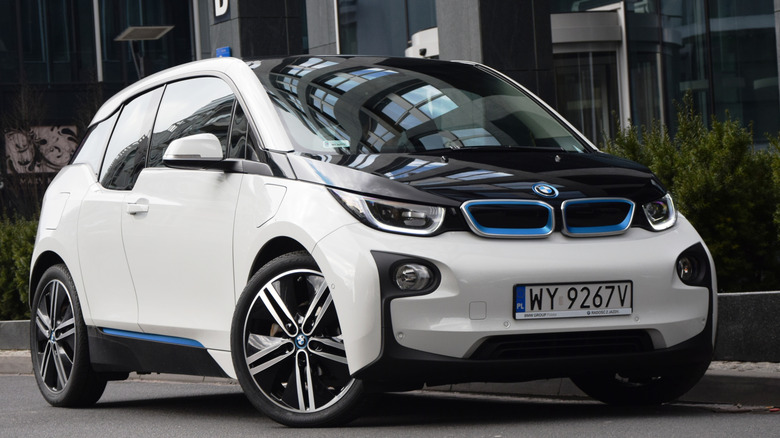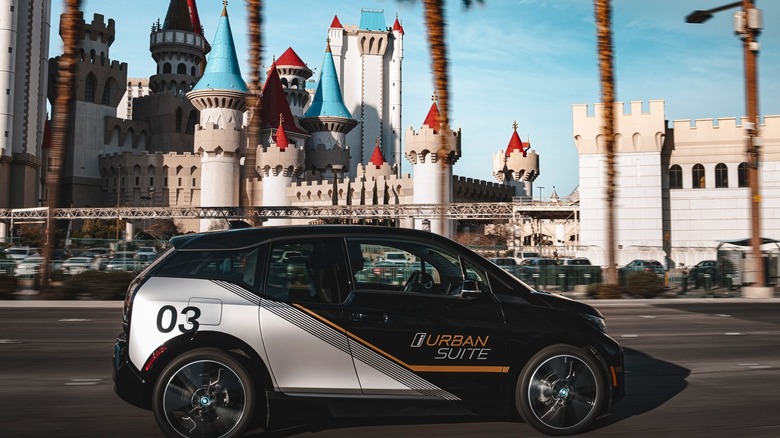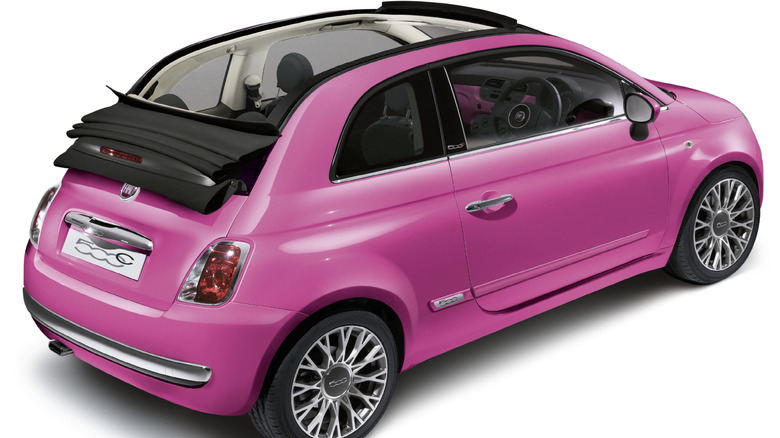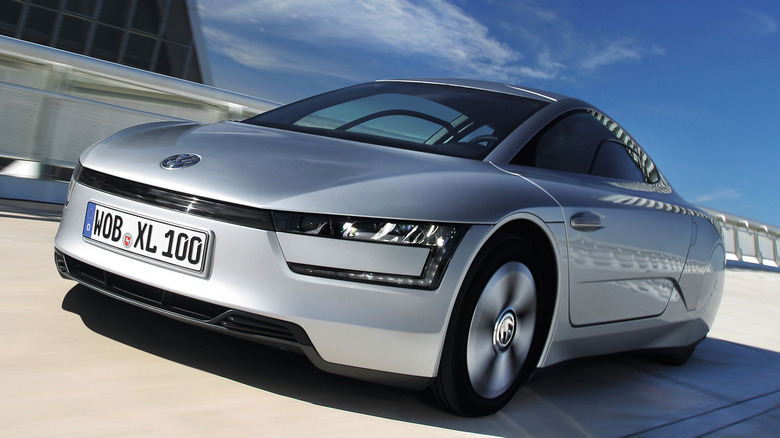4 Surprisingly Quick Cars Powered By Two-Cylinder Engines
Automotive engine makers have their fads: V-8s, boxers, and inline-six engines have all caught the public's eye at one time or another. For a while in the 2010s, in particular, it seemed like car engines got comparatively tiny, even in bigger cars. Engines such as the three-cylinder Ford EcoBoost have been around for years and are still in production. Even two-cylinder engines, which were at one time primarily connected to little Fiats, have had a resurgence. New fuel injection and transmission technologies, as well as clever engine design, have helped improve small-engine performance. Even the electric car revolution has played a part.
While no two-cylinder cars are currently imported into the U.S., there are plenty of relatively late-model used ones on the American market. Others are only found abroad. While there are some incredibly slow, small-engined cars in the world, others come in with 0-60 times that could smoke base versions of older Camaros –– and are a lot easier to park afterward.
BMW i3
In 2014, BMW introduced its first all-electric compact car, the i3. The Bavarians also brought out a sort of hybrid as well. Unlike most hybrids, which have two different systems driving the wheels, BMW kept the electric-first premise of the car by not connecting the gas engine to the power train at all. The i3 uses a two-cylinder 650cc, 38 hp twin as a range extender. It does this by recharging the battery.
Motor Trend put the 2021 model year base i3 with the range extender through its paces and found that it ran 0-60 mph in 7 seconds, compared to 6.6 seconds for the version without the weight of the range extender on board. Motor Trend noted that BMW stated that the i3s with the range extender should do 0-60 mph in 6.8 seconds. The i3 has since been discontinued, but the popular city car is easily found second-hand.
Fiat 500
The Gen 2 Fiat 500 series has electric and gas engine options, including a turbocharged 900 cc twin called the TwinAir engine. It wasn't the base engine in the new Cinquecento, and in his review, Jeremy Clarkson noted that in the U.K., it cost an extra 1,000 pounds. It was not the fastest car with a two-cylinder engine in the era, but it did attract a lot of attention for its unusual parallel twin. The TwinAir, as the engine was known, produced at first 85 hp, then pumped up to 104 hp as part of the 2011 facelift. The newer engine propelled the 500 from 0-62 mph in 10 seconds.
Clarkson raved about the earlier version of the TwinAir engine, and that it was unique for not having a camshaft but rather used the exhaust valves to drive the inlet valves. AutoExpress also praised the engine note at higher rpms. The Gen 3 Fiat 500 is coming back to the U.S. in 2026, but the two-cylinder engine won't appear. Instead, the smallest engine slated is a 1.5-liter, three-cylinder engine.
Alfa Romeo MiTo
Alfa Romeo and Fiat share a parent company, Stellantis, so it was easy for Alfa to acquire the TwinAir engine for its own purposes. The MiTo, which debuted in 2008, never made it to the U.S., but considering that Fiat barely sold any Fiat 500s during its run in the U.S., there seems to have been little appetite for little, Italian sports cars with small engines. Other Alfa Romeo models were sent to the U.S., such as the Stelvio and the Giuletta, so had they decided to, the infrastructure was there.
The MiTo was available with a variety of engines, but the TwinAir was too small for the job. Jeremy Clarkson still loved the engine, which he had previously encountered when test-driving the new Fiat 500. In the Alfa, though, the TwinAir was out of its league, and Clarkson reports that after an initial surge in power, acceleration would be lackluster at best. However, its 0-60 time was still a little over 12 seconds. It's slow, but not Citroen 2CV slow.
Volkswagen XL1
The Fiat 500 is cute, the BMW i3 is futuristic, and the Alpha Romeo MiTo looks like a small, sporty car. But cars with two-cylinder engines took yet another turn in the 2010s with the Volkswagen XL1. It's a car that we've called one of the ten weirdest cars made in the 2010s. It's also one of the most fuel-efficient ever, at 261 mpg. The unusual car could carry two adults, but they sat in line, not across, which allowed Volkswagen to streamline the car.
The car's unusual configuration did not stop there. It was powered by a two-cylinder, 800 cc turbo-diesel that generated 48 hp. Volkswagen claimed that the car could reach over 30 miles on the battery and over 300 miles total while reaching a top speed of almost 100 mph and an 11.5-second 0-60 mph time. The company did make 250 copies of the car to call it a production vehicle and not a test car.




